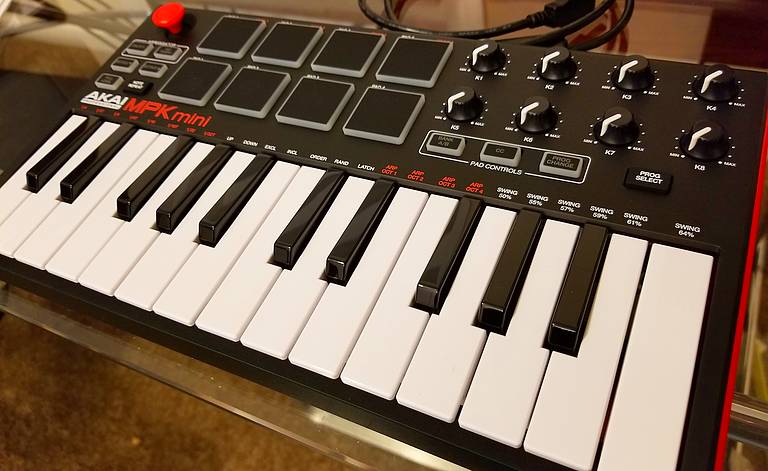Mini Studio Development
822 words.
I’m doing that thing again where my posts start piling up in Drafts because I write them on my MacBook Air in the living room, but I only add images on my gaming PC in the computer room, and I spend all of my time with my gaming PC actually gaming instead of adding images to blog posts, so the posts just sit here in Drafts until I force myself to add an image some days or weeks later. I know, I know, blog posts don’t *need* images to post, but I’ve been entirely convinced by years of “expert” advice and examples that nobody will ever click on any Internet content unless there is a colorful, compelling thumbnail picture associated with it.

The keys are not nearly as big as they look. If you have any experience with actual keyboard or piano keys, these feel nearly half that size.
I kept noticing the soundtrack while playing RimWorld. It’s a nice, understated soundtrack. But beyond that, I kept noticing how it sounded very much like the work of a single person in a little home studio. You can hear an acoustic guitar and an electric guitar, but otherwise it could be entirely produced out of a single computer running some VSTi plugins.
It got me thinking: *I* could have done that. I have guitars. I have a computer. I have VSTi plugins. What I *don’t* have is all of that stuff combined together into a productive recording studio workflow.
Building a recording studio is pretty tedious. When you think about the end result you want to achieve, and you’re starting from nothing, it’s pretty overwhelming. The modestly sophisticated home studio I had in the year 2000 was actually the product of about a decade of incremental improvements over time. Then I moved. A bunch of times, actually, between then and now, and I never got around to rebuilding more than tiny pieces of it. Most of that gear is gone now, either obsolete or broken or too expensive to keep.
The good news is that a little home studio is a whole lot easier to put together in 2019 than it was in 2000. Basically you just need a computer. Well, mostly. Microphones, too. The point is, I already had most of the parts, I just needed the ambition to assemble it all.
You need some digital audio workstation (DAW) software (I use REAPER), some sort of input device (a “controller”, or possibly even just a mouse and a keyboard), and something that makes sound, which these days is usually one or more VSTi plugins running in your DAW. I find VSTi plugins pretty arduous to find and use, so I’m going to try some caveman technology first: Plugging sound modules in with a MIDI cable.
I happen to have a couple of leftover MIDI gizmos from my olden days: An Alesis NanoPiano, which is a little box that creates a decent piano sound, along with a bunch of other synth sounds, and a Roland TD-12 drum module, which produces a bunch of decent drum sounds, along with a bunch of other Roland synth tones. The TD-12 is unfortunately crippled by a failing LCD display, so I might end up having to chuck it and find a VSTi drum module after all.
I ran into a snag with my input controller, though. I had an Oxygen 8 25-key USB keyboard controller I picked up about 10 years ago, but it turns out it’s already obsolete and there were no drivers available for Windows 10. Rather than hope the Windows 7 drivers continue to work, I just bought an Akai MPK mini, which is the same basic thing except the keys are smaller and it has 8 drum pads. It’s really compact, and the tiny little keys feel like the cheapest possible plastic that will break in 2 weeks, but it doesn’t take up much desk space and it’ll do in a pinch. It doesn’t have any MIDI ports though, which is kind of a bummer. I guess we’ve evolved into a post-MIDI society now, and everything connects via. USB to a PC.
Next all I need to do is drag my little Spider V30 modelling amp with direct USB output in here to record guitar into REAPER and presto, a complete home studio with drums, guitar, bass, and keyboards running direct into the computer’s digital recorder. Recording acoustic guitar and vocals will be a bit more work, but I still have most of my old microphones. I can add that incremental improvement later, though.
Of course I need to practice quite a bit. A lot of musically listless years have passed between 2000 and 2019, and that takes a big toll on the required muscles. I doubt I’ll ever get back to where I was in the last century, but through the magic of digital waveform editing and quantizing, maybe nobody will notice.
Note: Comments are disabled on older posts.